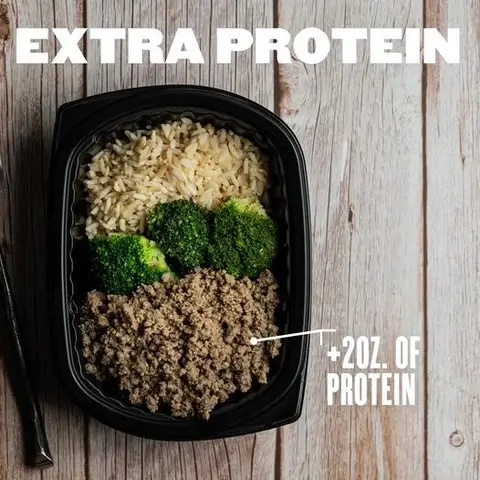
Craving Comfort Food: Root Causes
Crystal Zabka-Belsky, MS, RDN, CSSD, LMNT, LDN
Nutrition
|
Weight Loss
|
Healthy Lifestyle
|
Mental Health
6 minute read
Comfort food holds a special place in our hearts, often intertwined with memories of family gatherings, relationships, cultural practices, or even specific periods in our lives. Craving comfort food goes beyond the taste; it's a connection to emotional and psychological comfort that can be influenced by various factors. Let's delve into the intricate reasons behind our yearning for comfort food and how it impacts our well-being.
The Beginning of Comfort Food Associations
Our relationship with comfort food often starts with a sense of emotional or psychological solace while eating. Craving comfort food can be connected to alterations in brain chemistry that occur when we indulge in certain foods. Over time, this experience creates an emotional bond with particular dishes, making them our go-to sources of relief. Interestingly, comfort isn't always tied to the food itself, as some individuals find solace in the act of eating, whether it's a homemade meal or a quick fast-food fix. Even the process of overeating can provide a sense of comfort, irrespective of the food choice.
Research, such as a study published by Frontier in Psychology titled "Mood, food, and obesity," highlights how mood disorders can lead to food-based coping mechanisms, contributing to a cycle of mood, food, and obesity.
Roots in Personal Experience
Our individual experiences greatly influence our choices of comfort foods during moments of heightened emotion. The foods we turn to during these times often become a form of self-medication, leading to patterns of chronic emotional eating. The influence of behavioral contagion can't be overlooked either; adults' emotional eating tendencies can shape children's habits from a young age. Additionally, our natural preference for sweet or savory foods plays a role in determining what we reach for when stressed.
Balancing Health and Comfort
Adapting traditional comfort foods to healthier versions is a viable solution. For instance, if ice cream is your comfort food of choice, consider halving your usual portion and replacing it with frozen fruit. If savory options like steak or rice are your preference, try incorporating a side of vegetables to control the portion. From my clinical experience, modifying eating patterns by adding healthier components proves more successful than attempting to eliminate comfort foods altogether. Services like Clean Eatz Kitchen offer portion-controlled comfort food options with a blend of nutritious ingredients, supporting moderation.
Comfort Food During Illness
The comfort derived from food isn't limited to emotional situations; it extends to times of illness. The foods we gravitate toward during sickness often address specific symptoms. For example, the aroma of garlic, thyme, and onion in chicken noodle soup can provide comfort and stimulate senses for those battling upper respiratory infections. When dealing with stomach illness, we might instinctively opt for salty carbohydrates like crackers, unknowingly aiding rehydration and stomach recovery. Furthermore, past experiences during periods of illness can lead to an emotional connection with certain foods.
The Nexus of Emotions, Food, and Coping
Research, such as a study published in Physiology and Behavior titled "Is comfort food actually comforting for emotional eaters?", delves into the intriguing relationship between emotions and food. Emotional eaters often find greater comfort in the taste of food than non-emotional eaters. Interestingly, those who don't engage in emotional eating are more likely to eat less when stressed. Both excessive and restrictive comfort eating can serve as coping mechanisms, offering a reduction in stress levels. Scientifically, brain chemistry changes and the placebo effect intertwine to influence the efficacy of comfort foods, often in combination.
Gender and Age Dynamics
Studies suggest that gender and age play a role in shaping comfort food preferences. Males tend to lean towards hearty, warm meals like casseroles, steaks, and soups. On the other hand, females often find comfort in snack-based options such as ice cream, desserts, and chocolate which can be switched with some low-carb snacks instead. However, these preferences are also shaped by life experiences, childhood modeling, and behavioral contagion.
Final Thoughts
In conclusion, the allure of comfort food is a complex interplay of emotional associations, brain chemistry, personal experiences, and societal influences. Understanding these factors allows us to make conscious choices that prioritize both our emotional well-being and our physical health. Balancing comfort and health empowers us to indulge in our favorites while nurturing our overall wellness.
FAQ
How does brain chemistry contribute to the comfort experienced from certain foods?
Our emotional connection to food is highlighted by the interesting interplay between brain chemistry and the comfort that comes from particular meals. Certain elements of comfort meals can cause our brains' chemical processes to be triggered. For instance, the carbs in foods like bread and pasta can promote the synthesis of serotonin, a neurotransmitter linked to emotions of happiness and relaxation.
Can the act of eating itself provide comfort, even beyond the specific food consumed?
Of course, eating has the capacity to provide consolation that goes beyond the food that is consumed. The cultural and sensory aspects connected to eating can be responsible for this tendency. For instance, cooking a dinner at home might bring up a sense of warmth. Similar to how dinnertime with loved ones can strengthen bonds and provide emotional support.
How do mood disorders contribute to food-based coping mechanisms?
Our connection with food can be severely impacted by mood disorders, which frequently result in the development of food-based coping mechanisms. People who suffer from mood disorders like anxiety or depression may turn to comfort foods as a way to get some solace from their distress. Dopamine and other neurotransmitters are released as a result of eating certain meals, and they have the ability to temporarily reduce unpleasant emotions and give one a sensation of pleasure.
Can adapting comfort foods to healthier versions be effective?
Traditional comfort food recipes can be modified slightly to produce meals that are both nourishing and provide a sense of comfort. If ice cream is your favorite comfort food, for instance, switching to frozen yogurt or mixing frozen fruit to make a creamy sorbet can give you the same creamy texture and sweetness as ice cream while having less sugar.



